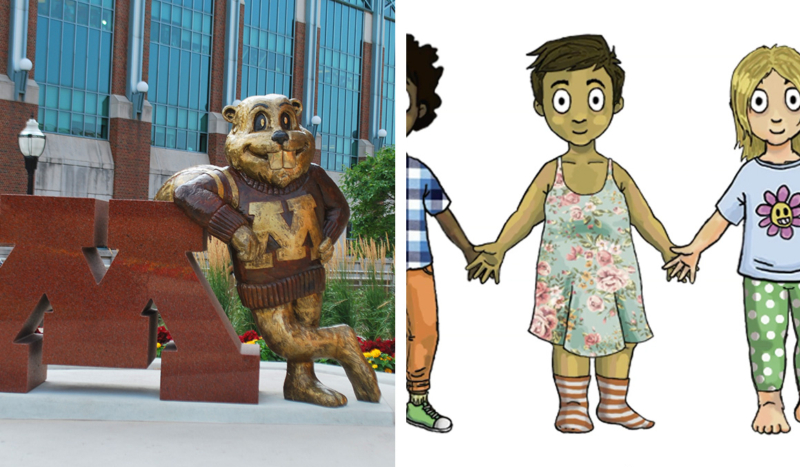
Alexlegeros / Wikimedia Commons (Left), Institute for Sexual & Gender video screengrab / Vimeo (Right)
The National Center for Gender Spectrum Health (NCGSH) at the taxpayer-funded University of Minnesota medical school has been ramping up a project that seeks to affirm to gender-confused children that “all gender identities and gender expressions are valid.”
The university project’s website describes its “My Gender Dolls” as “classic paper dolls” for which “kids can select bodies, genitals, clothes, and other accessories as a way to visualize their anatomy and genders.”
“These dolls were designed by transgender and gender diverse artists,” touts artist Ashley Finch, who narrates a video about “My Gender Dolls.” Finch calls the dolls “a therapeutic tool for transgender and gender diverse kids to explore how they see themselves or how they’d like to see themselves in terms of gender identity and gender expression.”
The social media account Libs of TikTok posted the video to X on Monday:
Finch, identified as a “communications specialist,” launched the idea of “gender dolls” at the medical school’s Eli Coleman Institute for Sexual and Gender Health along with psychologist Rachel Becker-Warner, PsyD, and NCGSH Co-Director Dianne Berg, PhD.
The university’s website provides further description of the “gender dolls,” which appear to have been an active project since 2019:
The dolls consist of bodies that vary in age, shape, and skin color, so all kids can see themselves represented. In addition to the bodies, kids will have a choice of genitals and internal reproductive organs to show that their gender identity is valid no matter what parts they have. Clothing options: each clothing item is drawn several times so that any outfit will fit any body. With over 100 different clothing, accessory, and hair options, kids will have a lot of choices for self-expression through their doll.
As Minnesota-based Alpha News reported Monday, in the spring of 2020, an article about the “gender dolls” project at the school’s foundation website featured comments from Berg, who said she was using the dolls for her 5-to-11-year-old patients in order to “empower kids to express who they are.”
“It’s really important to address the belief, ‘I’m not a “real” boy because I don’t have these private parts,’ versus, ‘I am a real boy, whatever my anatomy looks like,’” Berg said. “It’s about helping children develop tools to cope with messages in society that could lead to shame.”
In February, the university’s NCGSH sent out a flyer on Instagram, offering to pay children between the ages of 5 and 10 and their parents “between $20 and $60” to try out the dolls, advertised as “a new hands-on activity to help talk about gender and bodies!”

“Children and parents will meet a few times in groups with others to play with and give us ideas about the activities,” the post stated.
In the video, Finch explains that once children decide which genitals they wish to have, the next “layer” is “internal reproductive parts.”
“It is important for kids to learn about what’s on the inside of their bodies,” she says. “Bodies are amazing, and there’s so many different kinds.”
Once genitals and internal reproductive parts have been applied to the dolls, children can choose their clothing.
“Gender expression is our way of telling the world how we want to be seen,” Finch explains. “My gender dolls have a lot of clothing and style choices.”
On its “Projects” page, the activist NCGSH boasts it has received $87,500 in grant funding. The center also touts:
- Published in 15 peer-reviewed journals and publications.
- Gave over 100 presentations across five international conferences, 12 national conferences, and 15 local conferences, reaching thousands of people.
- Partnered with regional surgeons to establish cohesive measurement of sexual functioning post gender confirmation surgery.
- Spearheaded an international initiative for the importance of transgender sexual rights.
- Built collaborations with over 10 international/national/local organizations dedicated to transgender advocacy, health and well-being.
The NCGSH “gender dolls” website underscores the intention to have so-called gender-affirming therapists use the dolls in their therapy sessions with children.
“As we move forward, the plan is to create more bodies, clothing, and accessories by hiring more transgender and gender diverse identified artists, and to get this tool into the hands of gender therapists who support kids with their gender exploration,” the “Gender Dolls” website states.

